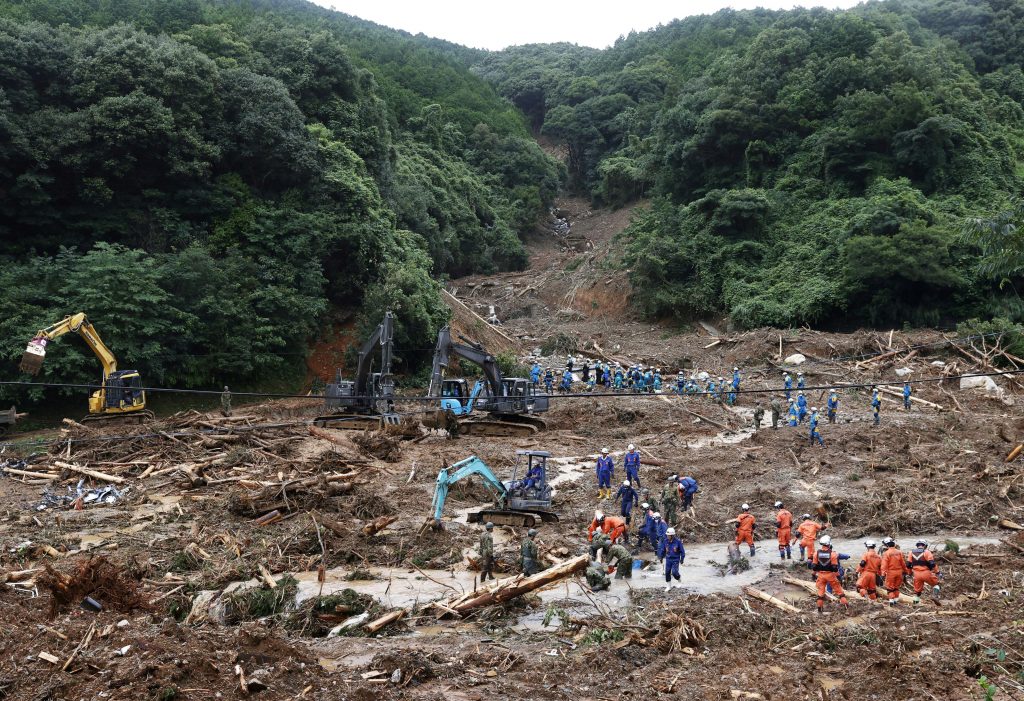
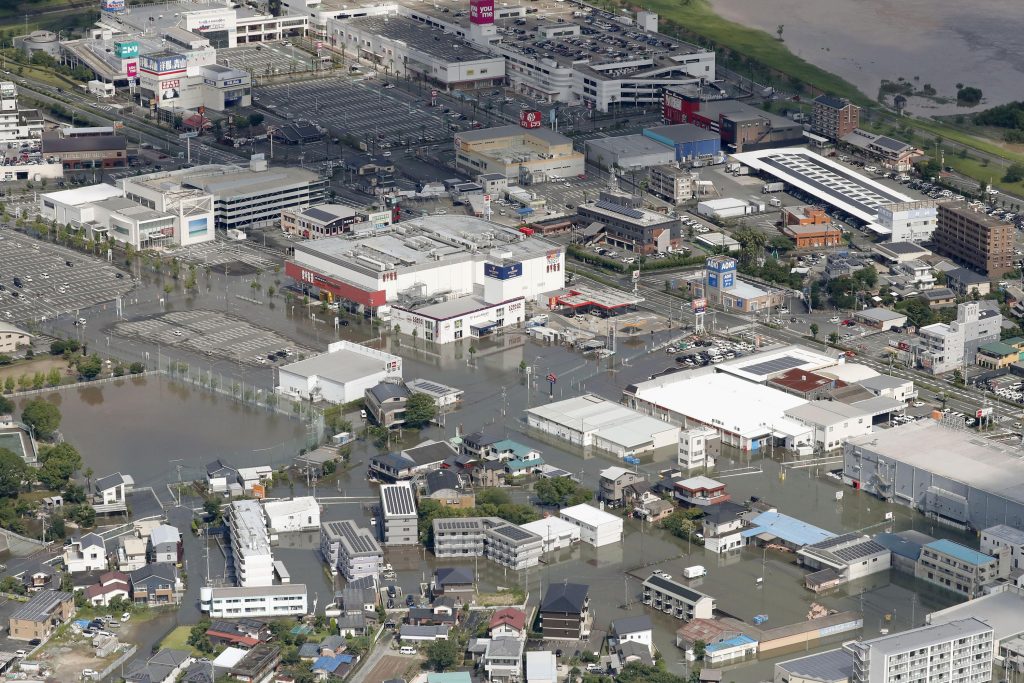
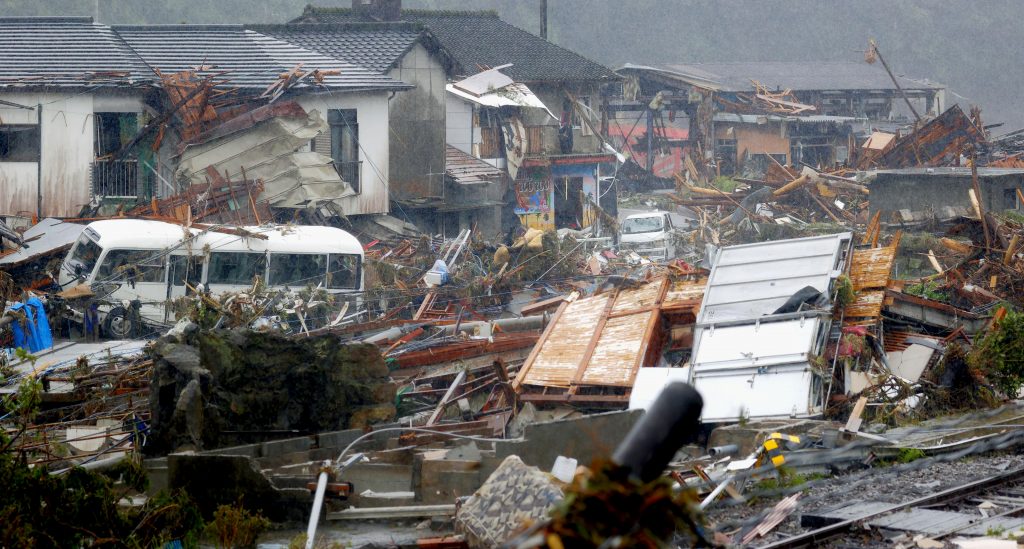

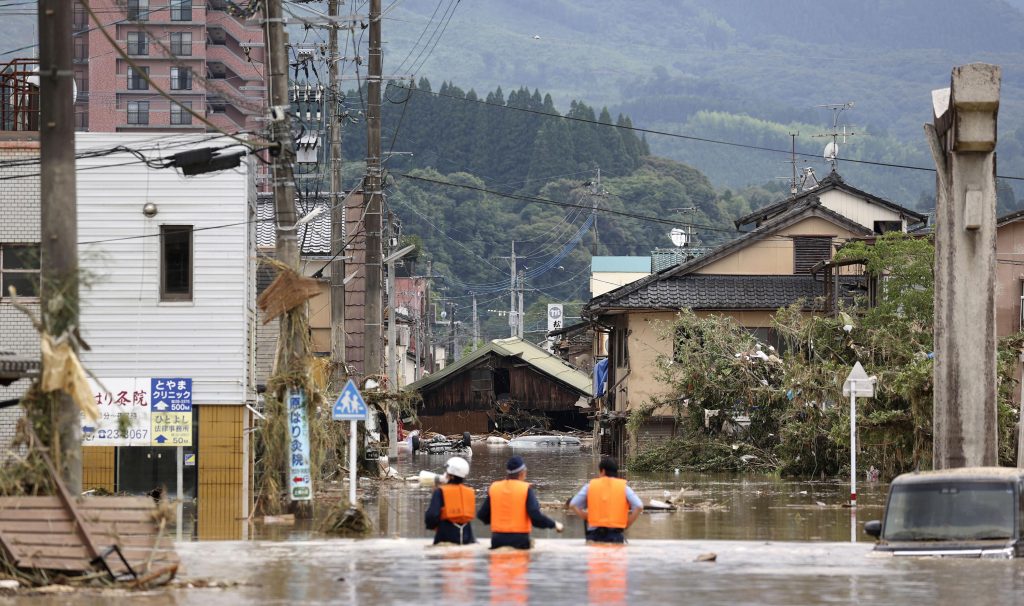
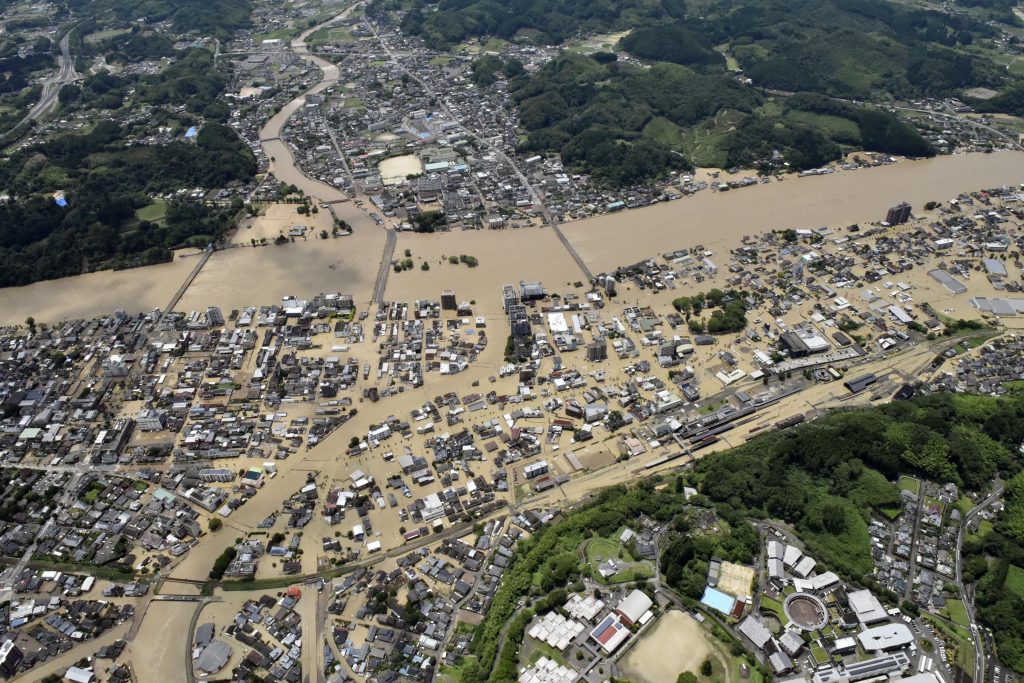
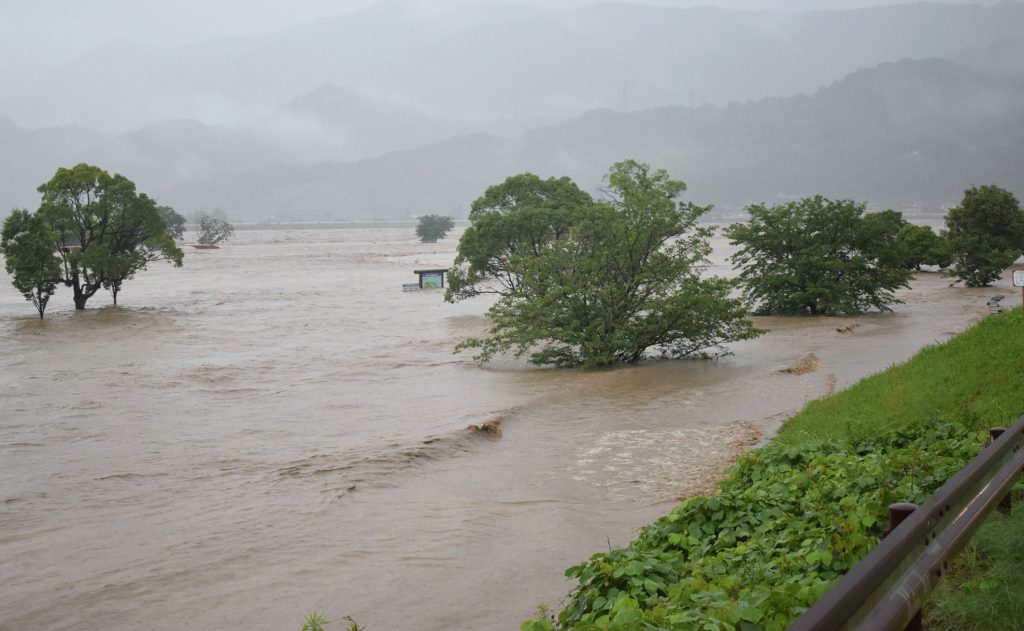









Japan issued fresh landslide and flooding warnings Wednesday as torrential rain moved over the centre of the country and the death toll from days of downpours rose to 58.
The weather front is now moving north, and on Wednesday morning the Japan Meteorological Agency (JMA) issued its highest level warning for Gifu and Nagano prefectures in central Japan.
“In these areas, heavy rains are at an unprecedented level,” a JMA official said.
“Especially in areas designated as high risk for landslides and flooding, the possibility is extremely high that some kind of disaster is already happening,” he warned.
“It is a situation where you have to do your best to protect your lives.”
At least 80,000 rescue workers have already been deployed in a desperate effort to reach survivors stranded by flooding and landslides.
Late Tuesday, Prime Minister Shinzo Abe pledged to double the number of troops involved in the rescue effort to 20,000.
The toll in the disaster has risen steadily as rescue workers discover new casualties.
As of Wednesday morning, the death toll from the heavy rains starting over the weekend had risen to 58, most of them from the hardest-hit Kumamoto prefecture. Four others were found in Fukuoka, another prefecture on Kyushu, Japan’s third-largest island.
At the peak, as many as 3.6 million people were advised to evacuate, although it wasn’t mandatory and the number who took shelter was not known. About half of the advisories have been lifted by Wednesday afternoon.
In hardest-hit Kyushu, the rains had mostly stopped by Wednesday morning, leaving residents in mourning and trying to come to terms with extensive damage.
Naomi Nishimura told Japan’s NNN broadcaster that her parents had been killed in flooding in Hitoyoshi City in Kumamoto region.
“Even though a neighbour came over and pleaded with my parents to evacuate, they didn’t go… because I had told them that I’d come home (that day),” the tearful women said as she attempted to clean her parents’ flood-devastated home.
In Kashima city in northern Kyushu’s Saga region, a woman was mopping the floor of a local souvenir shop that was inundated when a nearby river burst its banks.
“It usually settles at the very edge of that stone bridge, but this time the water splashed up without stopping,” she said.
“The water rose so fast that I was terrified. I was too scared and shaky to do anything, I just kept going this way and that,” she added, surrounded by knick-knacks now coated in mud.
Non-mandatory evacuation orders have now been issued for 1.4 million people, with millions more under lower level warnings.
But the coronavirus has complicated evacuation efforts, with the need to maintain social distancing reducing capacity at shelters.
Local media reported that some people were preferring to sleep in cars rather than risk infection at shelters.
At some facilities, cardboard walls were set up to separate families and try to reduce the risk of infection.
“It is too late to wait to evacuate until special warnings are issued,” a JMA official said on Wednesday morning.
Footage on NHK television showed a swollen river gouging into the embankment, destroying a highway, while in the city of Gero, the rising river was flowing just below a bridge.
Flooding and mudslides disrupted parts of a main road connecting Kamikochi and Matsumoto, two main tourist destinations in Nagano, stranding hundreds of residents and visitors, though they are believed to have safely evacuated. In neighboring Gifu, hundreds of others were also isolated in hot springs town of Gero and Ontake.
In another mountainous scenic town of Takayama, several houses were hit by a mudslide, their residents all safely rescued.
In places where rain had subsided, residents were busy cleaning up their homes and workplaces.
In Gero, a man washed down mud at the entrance of his riverside house despite the evacuation advisory.
“I was told to run away and my neighbors all went, but I stayed,” he said. “I didn’t want my house to be washed away in my absence.”
In Oita, teachers at a nursery school were wiping the floor and drying the wet furniture. “I hope we can return to normal life as soon as possible,” Principal Yuko Kitaguchi told NHK.
Authorities have warned that the rains are expected to continue through Thursday.
Chief Cabinet Secretary Yoshihide Suga urged residents to use caution. “Disasters may happen even with little rain where grounds have loosened from previous rainfalls,” he said.
Suga pledged continuing search and rescue efforts, as well as emergency funds for the affected areas.
Japan is at high risk of heavy rain in early summer when wet and warm air from the East China Sea flows into a seasonal rain front above the country. In July 2018, more than 200 people, about half of them in Hiroshima, died from heavy rain and flooding in southwestern Japan.
AFP/AP